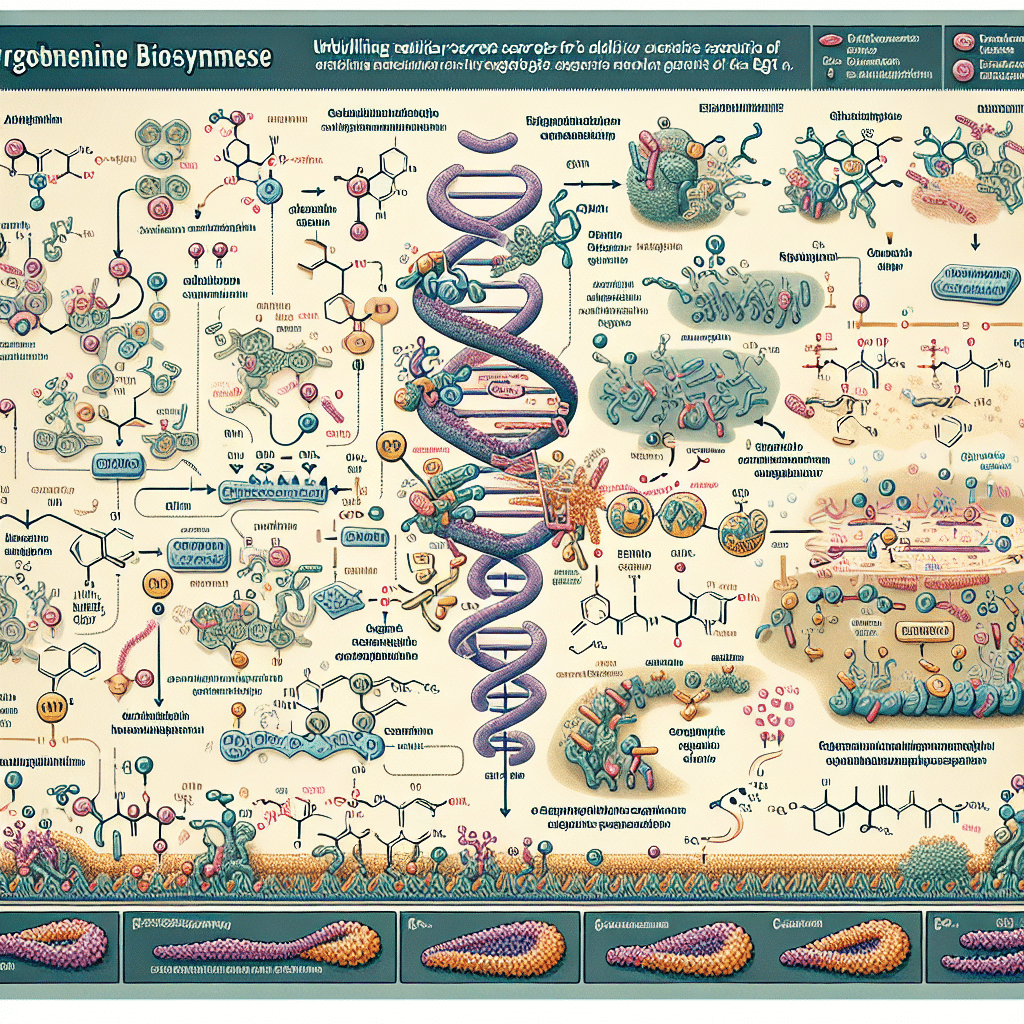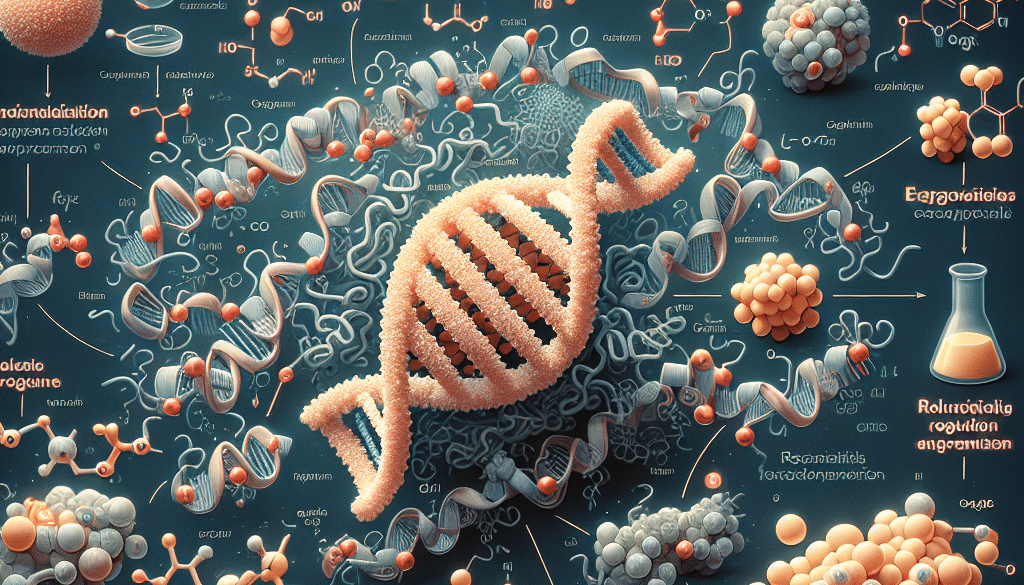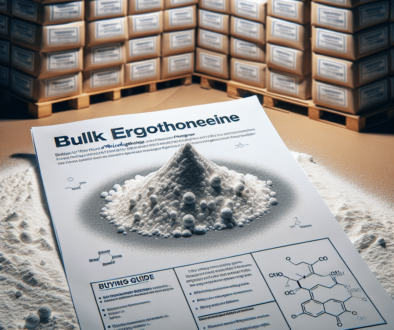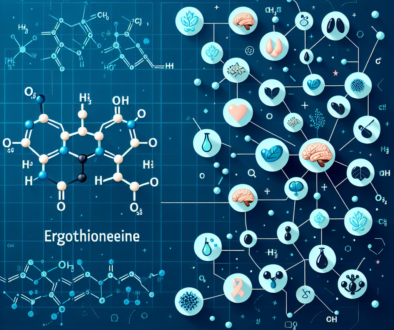Ergothioneine Biosynthesis: Unveiling EgtD’s Regulatory Secrets
-
Table of Contents
- Ergothioneine Biosynthesis: Exploring EgtD’s Regulatory Mysteries
- The Significance of Ergothioneine
- Understanding Ergothioneine Biosynthesis
- Zooming in on EgtD: The Enzyme at the Heart of Ergothioneine Biosynthesis
- Factors Influencing EgtD Activity
- Regulatory Mechanisms of EgtD
- Case Studies and Research Findings
- Implications for Industry and Medicine
- Conclusion: The Future of Ergothioneine Research
- Discover ETprotein’s High-Quality Protein Products
Ergothioneine Biosynthesis: Exploring EgtD’s Regulatory Mysteries

Ergothioneine (ET) is a naturally occurring amino acid and is considered a potent antioxidant, with a variety of potential health benefits. It is synthesized by certain bacteria and fungi, and humans obtain it through their diet. The biosynthesis of ergothioneine is a complex process, and one of the key enzymes involved is EgtD. Understanding the regulatory mechanisms of EgtD is crucial for advancing our knowledge of ergothioneine’s role in biology and for harnessing its therapeutic potential. This article delves into the intricacies of ergothioneine biosynthesis, with a focus on unveiling the regulatory secrets of EgtD.
The Significance of Ergothioneine
Ergothioneine has been the subject of numerous studies due to its unique properties and potential health benefits. It is known to:
- Act as a powerful antioxidant, protecting cells from oxidative damage.
- Have anti-inflammatory properties.
- Possess potential neuroprotective effects, which could be beneficial in diseases like Parkinson’s and Alzheimer’s.
- Play a role in the aging process and age-related diseases.
Given these attributes, the demand for ergothioneine in pharmaceuticals, nutraceuticals, and as a dietary supplement is on the rise, making the study of its biosynthesis increasingly important.
Understanding Ergothioneine Biosynthesis
The biosynthesis of ergothioneine is a multi-step process that involves several enzymes. The pathway begins with the amino acid histidine and, through a series of enzymatic reactions, leads to the production of ergothioneine. The key enzymes involved in this pathway are EgtA, EgtB, EgtC, and EgtD.
EgtD, in particular, is responsible for the last step of ergothioneine biosynthesis, which is the trimethylation of hercynine to form ergothioneine. This step is crucial as it finalizes the molecule’s structure, endowing it with its antioxidant properties.
Zooming in on EgtD: The Enzyme at the Heart of Ergothioneine Biosynthesis
EgtD is a SAM-dependent methyltransferase, and its activity is pivotal for the production of ergothioneine. The regulation of EgtD’s activity can influence the overall levels of ergothioneine in organisms. Understanding how EgtD is regulated is therefore essential for both fundamental biology and for the development of applications that rely on ergothioneine.
Factors Influencing EgtD Activity
Several factors can influence the activity of EgtD, including:
- Substrate availability: The presence of sufficient levels of hercynine and S-adenosylmethionine (SAM) is necessary for EgtD activity.
- Gene expression: The expression levels of the egtD gene can affect how much of the enzyme is produced.
- Post-translational modifications: Like many enzymes, EgtD may be subject to modifications after it is produced, which can alter its activity.
- Environmental factors: Conditions such as pH, temperature, and the presence of metal ions can affect enzyme activity.
Regulatory Mechanisms of EgtD
Research into the regulatory mechanisms of EgtD is ongoing. Some studies suggest that feedback inhibition may play a role, where high levels of ergothioneine could inhibit the activity of EgtD to prevent overproduction. Other research points to the possibility of genetic regulation, where the egtD gene’s expression is controlled by various signals within the cell.
Case Studies and Research Findings
Several studies have provided insights into the regulation of EgtD and ergothioneine biosynthesis:
- A study on the bacterium Mycobacterium smegmatis showed that deletion of the egtD gene resulted in a complete loss of ergothioneine production, highlighting the enzyme’s essential role.
- Research on the fungus Neurospora crassa revealed that ergothioneine levels could be increased by overexpressing the egtD gene, suggesting that gene regulation is a key factor in controlling ergothioneine production.
- Investigations into the effect of environmental stressors on ergothioneine production have shown that certain conditions can induce the expression of egtD, leading to increased ergothioneine levels.
These studies underscore the complexity of EgtD regulation and the need for further research to fully understand the mechanisms at play.
Implications for Industry and Medicine
The ability to regulate ergothioneine biosynthesis has significant implications for various industries:
- In pharmaceuticals, controlled production of ergothioneine could lead to new treatments for oxidative stress-related diseases.
- In the food industry, enhancing ergothioneine content in crops through genetic engineering could improve their nutritional value.
- In cosmetics, ergothioneine’s antioxidant properties make it a valuable ingredient for skin care products.
Understanding EgtD’s regulatory mechanisms could enable these industries to optimize ergothioneine levels for their specific needs.
Conclusion: The Future of Ergothioneine Research
The study of ergothioneine biosynthesis, particularly the role and regulation of EgtD, is a rapidly evolving field with significant potential for scientific and industrial advancements. As research continues to unravel the complexities of EgtD’s regulatory mechanisms, we can expect to see new applications and innovations that leverage the power of this remarkable molecule.
Discover ETprotein’s High-Quality Protein Products
If you’re interested in the potential of ergothioneine and are looking for high-quality protein products, ETprotein is your go-to source. With a commitment to excellence, ETprotein offers a range of protein and L-(+)-Ergothioneine products suitable for various industries.
About ETprotein:
ETprotein, a reputable protein and L-(+)-Ergothioneine (EGT) Chinese factory manufacturer and supplier, is renowned for producing, stocking, exporting, and delivering the highest quality organic bulk vegan proteins and L-(+)-Ergothioneine. They include Organic rice protein, clear rice protein, pea protein, clear pea protein, watermelon seed protein, pumpkin seed protein, sunflower seed protein, mung bean protein, peanut protein, and L-(+)-Ergothioneine EGT Pharmaceutical grade, L-(+)-Ergothioneine EGT food grade, L-(+)-Ergothioneine EGT cosmetic grade, L-(+)-Ergothioneine EGT reference grade and L-(+)-Ergothioneine EGT standard. Their offerings, characterized by a neutral taste, non-GMO, allergen-free attributes, with L-(+)-Ergothioneine purity over 98%, 99%, cater to a diverse range of industries. They serve nutraceutical, pharmaceutical, cosmeceutical, veterinary, as well as food and beverage finished product distributors, traders, and manufacturers across Europe, USA, Canada, Australia, Thailand, Japan, Korea, Brazil, and Chile, among others.
ETprotein specialization includes exporting and delivering tailor-made protein powder and finished nutritional supplements. Their extensive product range covers sectors like Food and Beverage, Sports Nutrition, Weight Management, Dietary Supplements, Health and Wellness Products, and Infant Formula, ensuring comprehensive solutions to meet all your protein needs.
As a trusted company by leading global food and beverage brands and Fortune 500 companies, ETprotein reinforces China’s reputation in the global arena. For more information or to sample their products, please contact them and email sales(at)ETprotein.com today.












